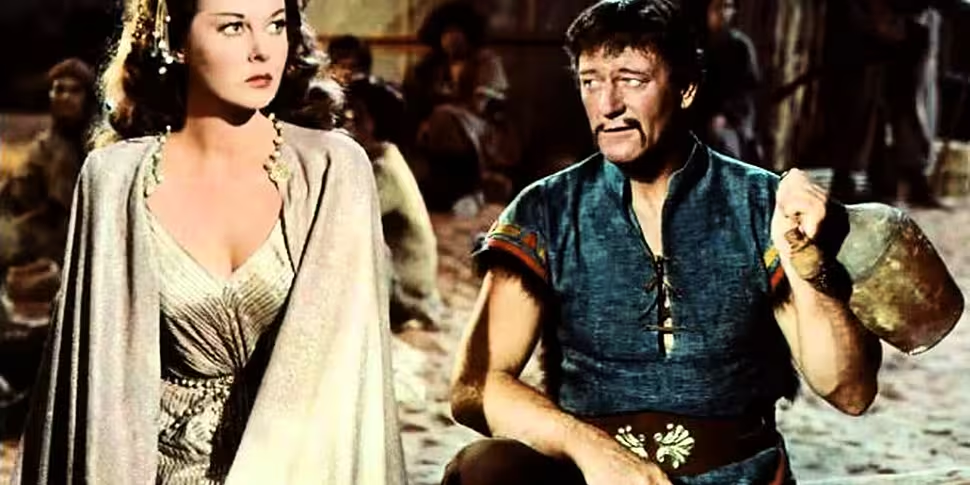Around 120 miles north-east of Las Vegas lies the town of St. George, Utah. It's a settlement famous for producing cotton, wine grapes, silk and Mormons. While the crops are no longer harvested, Mormonism still thrives, as evinced by the imposing temple that dominates the local skyline.
St. George is surrounded by formations of sandstone and white sand dunes. Its distinctive landscape has long appealed to film makers, and has been the backdrop for a number of Hollywood productions. The most notorious, and ultimately tragic, movie to film there was The Conqueror (1956).
A historical epic, The Conqueror depicts the rise of Genghis Khan, his battles with the Tartar armies, and his pursuit of the princess Bortai. It was produced by the aviator/film tycoon Howard Hughes, and directed by Dick Powell.
St. George was chosen as a location by Powell, as he felt it closely resembled the Mongol landscape of the story. That was the first of many misjudgements.
John Wayne was spectacularly miscast as Khan, a role he apparently fought for and later regretted. Susan Hayward played Bortai while support was given by Pedro Armendáriz, Agnes Moorehead and John Hoyt. The Tartars, an ethnic group from Eastern Europe and Northern Asia, were for some strange reason played by Native American actors.
With an awful script and a woefully miscast leading man, The Conqueror was a predictable disaster. After its calamitous release in 1956, Hughes bought all copies of it, and prevented it from being shown for the next seventeen years.
Dark legacy
The Conqueror’s legacy runs much darker than a purely critical and financial failure.
Throughout the fifties, the Atomic Energy Commission conducted nuclear tests on the nearby Nevada Test Site. Underground and atmospheric testing occurred there, and it was the former that would prove so tragic to the production.
In 1953, two atmospheric experiments known as “Simon” and “Harry”, were performed in the in the area known as Yucca Flat. Radioactive debris was released into the air, and eventually coated the surrounding areas.
Saint George, only 130 miles east of Yucca, teemed with the fallout.
Radiation
The production crew were aware of the possible radiation. But their ignorance, spurred on by numerous government denials, prevented them from taking it seriously. It was only in the seventies, when a number of cast members succumbed to cancer, that questions were asked.
Powell was the first to die in 1963, of cancer of the lymph nodes. He was swiftly followed that same year by Armendáriz, who committed suicide after learning of his terminal cancer. Cancer also accounted for Moorhead in 1974, Hayward in 1975 and ‘the Duke’ himself in 1979.
In November 1980, People magazine confirmed that out of the 220 cast and crew members that worked on The Conqueror, 91 had contracted cancer. A study by the University of Utah estimated that this extraordinary ratio was three times the expected rate.
It is likely that the radioactive material in St. George contributed to the numerous cases of cancer, but another factor could not have helped.
When shooting finished in Utah, the production returned to Hollywood for the final scenes. In order to maintain authenticity in the studio, Hughes had 60 tons of real soil scattered on the set’s floor. Guess where the soil came from.









